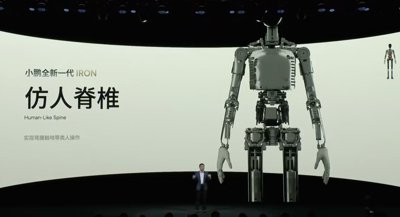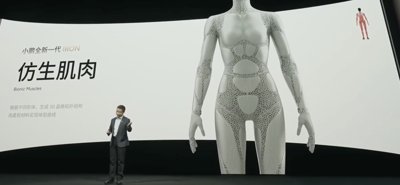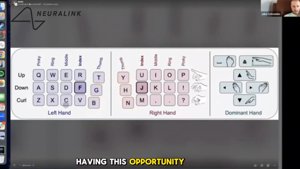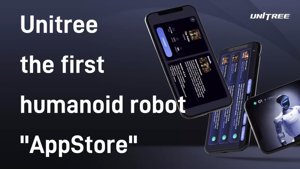In the increasingly crowded, no-holds-barred dash to sculpt a truly convincing humanoid robot, simply staying upright without face-planting is no longer enough to steal the limelight. Chinese EV titan XPeng clearly gets this, and at its recent 2025 AI Day, it dramatically whipped the covers off its next-generation “IRON” humanoid, promptly declaring it the “most anthropomorphic” robot yet. While that’s a claim bold enough to make a seasoned PR guru blush, the sheer technical wizardry under the bonnet suggests XPeng isn’t just dabbling in a whimsical science project; it’s plotting the next logical, utterly brilliant stride in its transformation into a “Physical AI” powerhouse.
During the aptly named “Emergence” event, CEO He Xiaopeng recounted how, during rehearsals, some colleagues genuinely wondered if a flesh-and-blood human was cleverly tucked inside the robot’s sleek shell. And honestly, watching its unnervingly fluid, almost balletic gait, it’s an easy, if slightly unsettling, mistake to make. This isn’t merely about aesthetics; XPeng is banking on the notion that a more human-like form and function is the silver bullet to unlock the vast troves of data needed for these metallic marvels to safely and effectively navigate a world, quite frankly, built for us. The IRON robot, then, isn’t just a collection of circuits and actuators; it’s the very physical embodiment of the AI propelling XPeng’s entire ecosystem, from the tarmac to the stratosphere.
Bionic Bones and a Solid-State Heartbeat
XPeng’s audacious claim of being the “most human-like” isn’t just slick marketing patter; it’s deeply etched into the very fabric of its hardware. The IRON robot sports a “bionic bone-muscle-skin” structure meticulously engineered to ape human biomechanics with a level of fidelity that’s genuinely jaw-dropping.

Central to this marvel is a flexible, uncannily human-like spine, granting the robot the ability to bend and twist with a natural, almost organic, range of motion. This is brilliantly complemented by synthetic “bionic muscles” and a full-coverage soft skin, cleverly embedded with touch sensors, which XPeng assures us makes interaction “warmer and more intimate.” One might even say it’s where circuits meet charisma. The hands alone are a staggering feat of engineering, each boasting 22 degrees of freedom, paving the way for the kind of delicate, fine motor control typically reserved for, well, humans.

Perhaps the most groundbreaking hardware innovation lies beneath that supple skin. XPeng trumpeted that IRON is the industry’s maiden humanoid robot to embrace an all-solid-state battery. CEO He Xiaopeng robustly defended deploying this bleeding-edge tech in a robot rather than, say, a car, arguing that the stringent safety protocols demanded for a machine operating in such close quarters with humans – think homes and offices – make it the absolute perfect proving ground. Solid-state batteries, you see, don’t just pack a higher energy punch; they’re inherently safer than their liquid-electrolyte predecessors, effectively eliminating the rather inconvenient risk of flammable leakage or a fiery thermal runaway. Which, let’s be honest, is a definite plus when your new robotic pal is fetching you a cuppa.
The Grey Matter Behind the Grand Emergence
A body this convincing, however, would be little more than a fancy mannequin without a formidable brain. Here, XPeng shrewdly leverages the colossal AI infrastructure it painstakingly constructed for its autonomous vehicles. The IRON robot is powered by a triumvirate of XPeng’s proprietary Turing AI chips, collectively churning out a truly formidable 2,250 TOPS of raw computing muscle.
This state-of-the-art hardware orchestrates a complex, multi-modal AI architecture that ingeniously weaves together three colossal models:
- VLA (Vision-Language-Action): This is the second iteration of XPeng’s foundational autonomous driving model, now evolved to translate visual input directly into action, elegantly sidestepping language for quicker, more reflexive responses. It’s the silicon-and-steel ballet of tomorrow.
- VLM (Vision-Language Model): The brains behind its advanced, remarkably low-latency conversational prowess. Think less clunky chatbot, more witty companion.
- VLT (Vision-Language-Task): A brand-new model, unveiled for the first time, and confidently described as the “core engine” for the robot’s autonomous decision-making and seamless task execution in our messy, physical world.
This harmonised AI stack, meticulously trained on a cloud cluster boasting over 30,000 GPUs, empowers IRON to see, move, and interact in real-time with an almost uncanny grace. It’s a textbook case of cross-platform synergy, where breakthroughs in automotive AI are directly turbocharging the march of robotics. Absolutely smashing, if you ask us.

A Pragmatic Pavement to Profit
While some of its rivals are busy showing off robots performing gravity-defying backflips or meticulously tightening bolts on a factory floor, XPeng unveiled a refreshingly pragmatic, almost cautiously sensible, commercialisation roadmap. Following extensive trials, the company concluded that deploying robots for industrial grunt work, like endlessly screwing things in, is currently a rather dodgy business, primarily due to the eye-watering cost and inevitable wear-and-tear on those complex, dexterous hands. Similarly, they’re of the mind that the technology isn’t quite mature enough to guarantee rock-solid safety for general-purpose household chores – no one wants a robot butler accidentally setting fire to the curtains, do they?
Instead, IRON is set to make its grand debut in structured commercial environments, initially taking on roles such as:
- Tour guides
- Shopping assistants
- Receptionists
The company has ambitious plans to kick off mass production preparations by April of next year, with the admirable goal of achieving full-scale mass production by the close of 2026. They’ll also be releasing an SDK, a clever move to encourage developers from across the globe to build a thriving application ecosystem around this rather brilliant bot.
More Than Just the Bots About Town
While the IRON humanoid undoubtedly hogged the spotlight, XPeng’s AI Day subtly underscored a far grander, more expansive ambition. The underlying VLA 2.0 model isn’t merely for robots; it’s the very bedrock for the company’s entire next generation of products. This includes a significant push into Level 4 autonomous driving with forthcoming “Robo” variants of their cars and a fleet of three distinct RoboTaxi models slated to begin trials in 2026.
In a truly massive vote of confidence, Volkswagen was announced as the inaugural strategic partner for the VLA 2.0 system. The German automotive behemoth will also be incorporating XPeng’s Turing AI chips into its vehicles, marking a significant, indeed pivotal, milestone for the Chinese firm’s in-house hardware endeavours. This deep, synergistic collaboration not only validates XPeng’s cutting-edge technology on a global stage but also opens up a powerful new revenue stream. Chuffed, they must be.
By diligently crafting a unified AI platform that seamlessly powers cars, robotaxis, and humanoids alike, XPeng is making a shrewd, calculated wager that the future of mobility and automation is inextricably linked. The IRON robot, then, is far more than just a flashy demo; it’s a bold, declarative statement of intent from a company that perceives itself not merely as a carmaker, but as a future architect of our increasingly AI-driven physical world.






